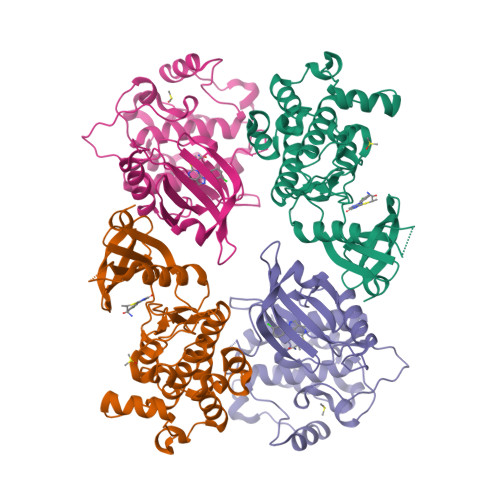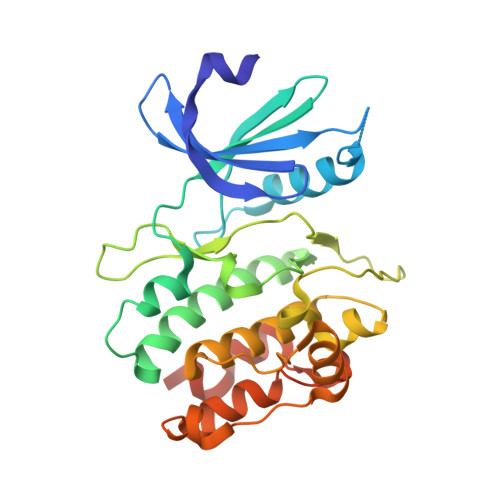Targeting Pim Kinases and DAPK3 to Control Hypertension.
Carlson, D.A., Singer, M.R., Sutherland, C., Redondo, C., Alexander, L.T., Hughes, P.F., Knapp, S., Gurley, S.B., Sparks, M.A., MacDonald, J.A., Haystead, T.A.J.(2018) Cell Chem Biol 25: 1195
- PubMed: 30033129
- DOI: https://doi.org/10.1016/j.chembiol.2018.06.006
- Primary Citation of Related Structures:
5VJA - PubMed Abstract:
Sustained vascular smooth muscle hypercontractility promotes hypertension and cardiovascular disease. The etiology of hypercontractility is not completely understood. New therapeutic targets remain vitally important for drug discovery. Here we report that Pim kinases, in combination with DAPK3, regulate contractility and control hypertension. Using a co-crystal structure of lead molecule (HS38) in complex with DAPK3, a dual Pim/DAPK3 inhibitor (HS56) and selective DAPK3 inhibitors (HS94 and HS148) were developed to provide mechanistic insight into the polypharmacology of hypertension. In vitro and ex vivo studies indicated that Pim kinases directly phosphorylate smooth muscle targets and that Pim/DAPK3 inhibition, unlike selective DAPK3 inhibition, significantly reduces contractility. In vivo, HS56 decreased blood pressure in spontaneously hypertensive mice in a dose-dependent manner without affecting heart rate. These findings suggest including Pim kinase inhibition within a multi-target engagement strategy for hypertension management. HS56 represents a significant step in the development of molecularly targeted antihypertensive medications.
Organizational Affiliation:
Department of Pharmacology and Cancer Biology, Duke University Medical Center, Durham, NC 27710, USA.



















